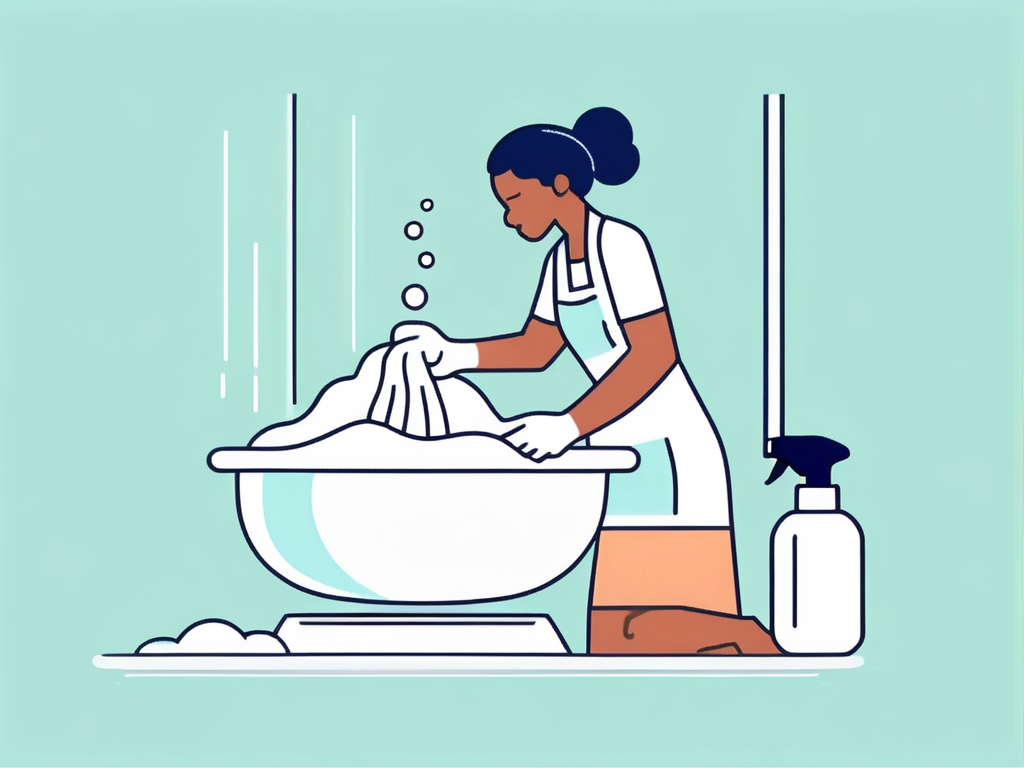Retainers play a vital role in maintaining the alignment of teeth after orthodontic treatment. However, it is crucial to keep them clean to prevent the buildup of bacteria and potential health risks. In this article, we will explore the importance of cleaning retainers and the role toothpaste plays in keeping them fresh. We will also provide you with a step-by-step guide on how to clean your retainers using toothpaste and offer some helpful tips for maintaining their cleanliness. Finally, we will address common concerns and questions regarding retainer cleaning. So, let's dive in!
Understanding the Importance of Cleaning Retainers
Retainers are designed to hold teeth in their corrected positions and prevent them from shifting back to their original misaligned state. However, over time, retainers can accumulate plaque, tartar, and food particles, providing a breeding ground for bacteria. Regular cleaning is crucial to maintaining the hygiene of your retainers.

When it comes to cleaning your retainers, a gentle approach is key. Using a soft-bristled toothbrush and mild soap or retainer cleaning tablets can effectively remove buildup without damaging the retainer material. Avoid using hot water, as it can warp the retainer and affect its fit. It's recommended to clean your retainer at least once a day to ensure optimal oral health.
Why Regular Cleaning is Essential
Regular cleaning of retainers helps to remove bacteria buildup, keeping your mouth healthy and preventing bad breath. Additionally, it reduces the risk of gum disease and tooth decay caused by unclean retainers. Proper oral hygiene includes cleaning not only your teeth but also any dental appliances you use, such as retainers.
Moreover, maintaining clean retainers can also prolong their lifespan and effectiveness. A well-maintained retainer not only promotes oral health but also ensures that your teeth remain in their proper alignment, preserving the results of your orthodontic treatment in the long run.
Potential Health Risks of Unclean Retainers
Unclean retainers can lead to various health issues, such as oral infections, gingivitis, and even systemic infections. Bacteria on your retainer can spread to other parts of your mouth, causing inflammation and potential harm to your overall health. Therefore, it is vital to prioritize retainer cleaning.
Remember, your retainer plays a crucial role in maintaining your beautiful smile and the alignment of your teeth. By incorporating proper cleaning techniques into your daily routine, you can ensure that your retainer remains a beneficial tool in preserving your oral health and the results of your orthodontic treatment.
The Role of Toothpaste in Retainer Cleaning
Toothpaste serves as an excellent tool for cleaning your retainers effectively. It not only helps in removing plaque and debris but also eliminates germs that can cause oral health problems.
When it comes to maintaining oral hygiene, using toothpaste to clean your retainers is a crucial step. Not only does it help keep your retainers looking clean and fresh, but it also plays a significant role in preventing bacterial growth and maintaining overall oral health.
Benefits of Using Toothpaste
Using toothpaste while cleaning your retainers offers several benefits. Toothpaste contains mild abrasives that are effective in removing plaque and tartar buildup without damaging the retainer's material. Additionally, toothpaste with fluoride can help prevent tooth decay and protect your retainers.
Furthermore, the minty flavor of toothpaste can leave your retainers smelling fresh and your mouth feeling clean. This added benefit enhances the overall experience of wearing retainers and encourages regular cleaning habits.
Choosing the Right Toothpaste
When selecting toothpaste for cleaning your retainers, opt for a non-abrasive, non-whitening toothpaste. Avoid using gel-based toothpaste as they may not be as effective in removing plaque. Consult with your orthodontist for any specific toothpaste recommendations.
It's essential to choose a toothpaste that is gentle yet effective in cleaning your retainers. By selecting the right toothpaste, you can ensure that your retainers remain in top condition and contribute to your overall oral health.
Step-by-Step Guide to Cleaning Retainers with Toothpaste
Gathering Your Cleaning Supplies
Before starting the cleaning process, gather all the necessary supplies. You will need lukewarm water, a soft-bristled toothbrush, toothpaste, and a clean towel. It's important to use a soft-bristled toothbrush to avoid scratching the surface of your retainer, which could create tiny crevices for bacteria to hide in.

Additionally, choosing a toothpaste without harsh abrasives or whitening agents is recommended to prevent any damage to the retainer's material. Make sure the towel you use is clean to avoid introducing any bacteria back onto your retainer.
The Cleaning Process
1. Begin by gently rinsing your retainer under lukewarm water to remove any loose debris. This step is crucial in preparing the retainer for cleaning, as it helps loosen any particles stuck on the surface.
2. Apply a pea-sized amount of toothpaste to your toothbrush and evenly distribute it on the bristles. The toothpaste will help break down plaque and kill bacteria on the retainer.
3. Gently brush the entire surface of your retainer using small circular motions. Pay extra attention to the areas with visible plaque or buildup, such as the grooves and crevices where bacteria tend to accumulate.
4. Avoid using excessive force or harsh scrubbing, as this can damage the retainer. Remember, a gentle touch is all that's needed to effectively clean your retainer without compromising its integrity.
5. Once you have thoroughly brushed the retainer, rinse it well under lukewarm water to remove any remaining toothpaste residue. Residual toothpaste left on the retainer can attract more bacteria if not properly rinsed off.
6. Dry your retainer with a clean towel and store it in its designated case to maintain cleanliness. Storing your retainer in its case when not in use helps protect it from external contaminants and prevents it from accidentally getting lost or damaged.
Tips for Maintaining Retainer Cleanliness
Retainers play a crucial role in maintaining the alignment of your teeth post-orthodontic treatment. To ensure their effectiveness and longevity, it is essential to prioritize their cleanliness and hygiene. Here are some additional tips to help you maintain your retainers in top condition:
Daily Care Routine for Retainers
To keep your retainers clean and hygienic, follow these tips:
- Brush your retainer at least twice a day, preferably after meals.
- Retainers can be soaked in a retainer cleaning solution or a mixture of water and vinegar for added cleanliness. However, consult your orthodontist for the appropriate soaking solution and duration.
- Regularly clean your retainer case with warm soapy water to remove any bacteria or debris.
- Avoid exposing your retainers to extreme heat or boiling water, as it can warp or damage them. Instead, use lukewarm water for cleaning purposes.
It is also recommended to gently brush your retainers with a soft-bristled toothbrush to remove any buildup or residue. Pay close attention to the nooks and crannies of the retainer to ensure thorough cleaning. Additionally, consider using a mild, non-abrasive soap or retainer cleaning tablets to maintain freshness.
What to Avoid When Cleaning Retainers
While it's essential to clean your retainers regularly, certain practices should be avoided to prevent damage:
- Avoid using alcohol-based mouthwashes or harsh cleaners, as they can damage the retainer's material.
- Do not use toothpaste with abrasive ingredients, such as baking soda or whitening agents, as they may wear down the retainer over time.
- Avoid wrapping your retainers in tissue or paper towels, as this can lead to bacterial contamination.
Remember, maintaining proper retainer hygiene not only ensures their longevity but also contributes to your overall oral health. By incorporating these additional care tips into your routine, you can keep your retainers clean, fresh, and effective in preserving your smile.
Addressing Common Concerns and Questions
Dealing with Stubborn Stains
If your retainer develops stubborn stains that do not come off with regular cleaning, consult your orthodontist for professional cleaning or suitable stain-removal methods. Avoid using harsh chemicals or abrasive materials to prevent damage.

Stubborn stains on retainers can be caused by various factors, such as consuming colored beverages like coffee or tea, smoking, or improper cleaning techniques. It's essential to address these stains promptly to maintain the appearance and hygiene of your retainer. Professional cleaning by your orthodontist can effectively remove tough stains without compromising the integrity of the retainer material.
How Often Should You Clean Your Retainer
It is recommended to clean your retainer at least once a day, preferably before bedtime. However, if you notice any visible plaque buildup or notice an unpleasant odor, consider cleaning your retainer more frequently.
Regular cleaning of your retainer not only helps in preventing stains and odor but also ensures that harmful bacteria are eliminated, reducing the risk of oral infections. Remember to use gentle cleaning methods, such as using a soft-bristled toothbrush or a retainer cleaning solution recommended by your orthodontist, to maintain the retainer's quality and effectiveness.
By following these cleaning guidelines and incorporating regular retainer cleaning into your oral hygiene routine, you can ensure the longevity of your retainers and maintain excellent oral health. Remember, a clean retainer leads to a healthy smile!
Now that you understand the importance of keeping your retainer clean for a healthy smile, consider giving your oral care routine an upgrade with Remi's custom mouth guards. Perfect for those who clench their teeth at night, Remi's mouth guards are crafted to fit you perfectly, ensuring comfort and protection. With the convenience of The Remi Club subscription service, you'll receive a new top and bottom set every six months, keeping your smile safe without the hassle. Made in the USA from dental-grade, BPA-free plastic, these mouth guards are an affordable and high-quality alternative to traditional options. Experience the ease of our at-home impression kit and the peace of mind that comes with our 30-day satisfaction guarantee. Ready to preserve your smile and invest in your oral health? Shop Now and join the many satisfied customers who have chosen Remi for their dental care needs.













